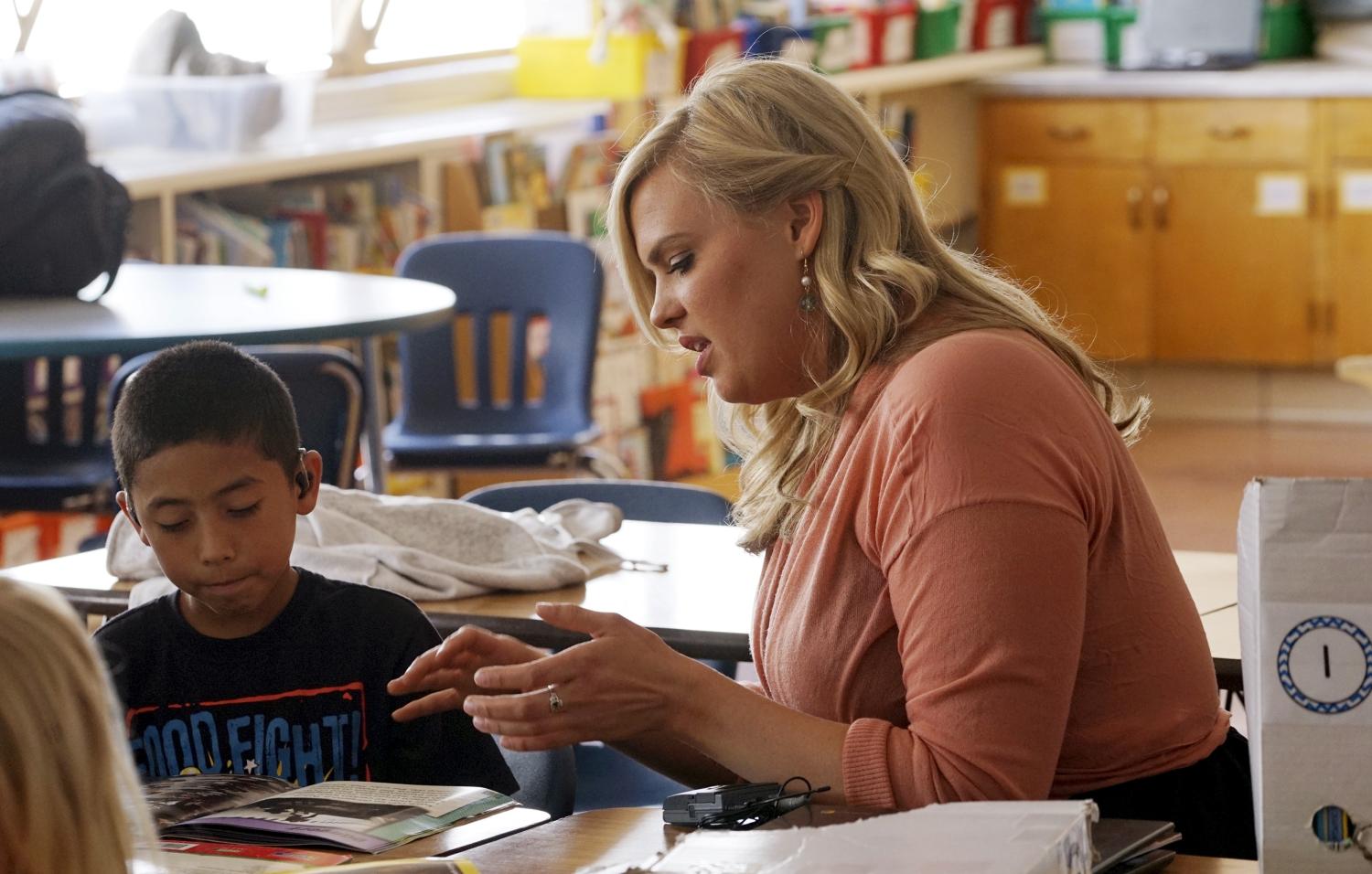Last month’s Supreme Court decision in Endrew F. v. Douglas County School District sets a higher bar for the “free appropriate public education” (FAPE) guaranteed to students with disabilities by the Individuals with Disabilities Education Act (IDEA). In the unanimous opinion, Chief Justice John Roberts wrote: “every child should have the chance to meet challenging objectives. This standard is more demanding than the ‘merely more than de minimis’ test applied by the Tenth Circuit.”1 While the new standard may be vague, it has rejuvenated public discussion around special education policy and practice.2
As policymakers and practitioners think about what changes may be required to meet the new standard, they should not overlook the role of general education. New evidence suggests that it’s possible for special education students to make large achievement gains without their traditional services in schools with high quality general education programs.3 This points to the importance of the quality of general education for students schools might place in special education. For simplicity, throughout this piece we refer to this group as special education students.
EVIDENCE FROM BOSTON CHARTER LOTTERIES
A new study by one of us (Elizabeth Setren) follows students participating in special education at the time they apply to charter elementary, middle, or high schools in Boston. By comparing students who randomly receive offers to attend a charter school to those that randomly do not receive lottery offers, the study estimates the causal impact of enrolling in a charter school for both special education and general education students.
The findings show that high quality general education can lead to remarkable progress for special education students. Attending a Boston charter school makes special education students 1.4 times more likely to score proficient or higher on their standardized tests, resulting in a 30 percent reduction of the special education achievement gap.
Gains extend to beyond just test scores: Boston charter enrollment boosts special education students’ college preparation. These students are over 1.6 times more likely to meet a key graduation requirement, over three times more likely to be eligible for a state merit scholarship, and over 3.8 times more likely to take at least one AP exam in a charter school compared to their peers who do not receive charter lottery offers.
Interestingly, special education students are less likely to receive special education services in Boston charters than their counterparts who enroll in the Boston Public Schools (BPS). Special education students who apply for a charter school lottery are two times less likely to keep their IEP and three times more likely to move to a more inclusive classroom setting if they randomly receive an offer to attend a charter.4
The study links the gains students who were in special education in BPS make after moving to charters to specific aspects of the charter schools’ general education programs, including high-intensity tutoring, increased instructional time, and high expectations. The findings are consistent with lottery-based evidence for the full student population that shows that charter schools with these characteristics also generate academic gains for the full student population in Boston,5 Denver,6 and New York.7 A geographically diverse sample of KIPP charters, which also employ high-intensity tutoring, a longer school day and year, and high expectations, also improve outcomes for special education and general education students alike.8 In contrast, as previously written about in this series, Massachusetts charters without these characteristics do not improve their students’ outcomes.9 Experimental evidence of the positive effects of these practices for both general and special education students when implemented in traditional public schools further emphasizes the importance of strong general education programs.10
The findings are robust to three common criticisms of charter schools: that high needs students do not enroll, that charters do not serve high needs students well, and that charters encourage lower performing students to leave. In recent years, the charter lottery special education applicants are representative of Boston Public Schools’ special education students in terms of level of services, disability type, and academic abilities. The enrollment numbers do not fully reflect this parity because charters are more likely to remove special education classifications and increase classroom inclusion. Achievement gains accrue even to the most disadvantaged students: students who had been in a substantially separate classroom in BPS and students who had the lowest test scores among special education students. Lastly, this study’s results are not affected by whether students enroll or remain in charter schools. Students count towards the charter outcomes if they get a charter lottery offer, even if they do not enroll or leave a charter school.
POLICY IMPLICATIONS
This study shows that schools with very high quality general education programs can boost achievement for students with disabilities. This points to the importance of strengthening general education services as a part of setting high academic expectations for students with disabilities. The Boston experience points specifically to the potential of approaches like high intensity tutoring, increased instructional time, and homework help.
These findings matter for funding and accountability. As federal, state, and local budgets potentially respond to Endrew F. and state and local pressures, it is important to remember that these increased supports for general education require funding—so transferring spending out of the general program to specific services clearly identifiable as benefiting solely students with disabilities could backfire.
The results here also matter for a broad range of choice policies. States have been turning to expanding choice with education savings accounts, vouchers, and scholarship tax credits, often in ways that limit the protections of IDEA for participating students. Advocates for students with disabilities are concerned with whether students with disabilities are guaranteed a free appropriate public education in any private school receiving public funds. Given the importance of high quality general education for students with disabilities, advocates should also care about whether those schools are held accountable for student achievement more broadly.
The authors did not receive financial support from any firm or person with a financial or political interest in this article. They are currently not officers, directors, or board members of any organization with an interest in this article.
-
Footnotes
- Endrew F. v. Douglas County School District. No. 15-827 (Mar. 22, 2017). https://www.supremecourt.gov/opinions/16pdf/15-827_0pm1.pdf.
- Joshua Dunn. 2017. “Special Education Standards.” Education Next 17 (3). http://educationnext.org/special-education-standards-supreme-court-raises-level-benefit-endrew-f-v-douglas-county/.
- Setren, Elizabeth M. 2016. “Special Education and English Language Learner Students in Boston Charter Schools: Impact and Classification.” School Effectiveness & Inequality Initiative Working Paper 2016.06, http://economics.mit.edu/files/12151.
- The majority of the classification removals can be explained by the poor student data transfer process from Boston Public Schools to Boston charter schools during the study period. Schools rarely received student records, including their special education status, before students enrolled. As a result, charter schools relied on parents to report that the student had a special education status at their former school. If the parents did not disclose, then the student lost the special education status. The increased classroom inclusion results from Boston charter schools’ emphasis on inclusion as well as their limited resources for substantially separate classrooms.
- Abdulkadiroğlu, Atila, Joshua Angrist, Susan Dynarski, Thomas J. Kane, and Parag Pathak. 2011. “Accountability and flexibility in public schools: Evidence from Boston’s charters and pilots.” Quarterly Journal of Economics 126 (2): 699–748.
- Abdulkadiroğlu, Atila , Joshua D. Angrist, Yusuke Narita and Parag A. Pathak. “Research Design Meets Market Design: Using Centralized Assignment For Impact Evaluation.” Forthcoming, Econometrica. http://www.nber.org/papers/w21705.pdf.
- Dobbie, Will and Roland Fryer. 2011. “Getting Beneath the Veil of Effective Schools: Evidence from New York City.” American Economic Journal: Applied Economics 5 (4): 28–60.
- https://www.mathematica-mpr.com/download-media?MediaItemId=%7b37A38E1F-FD9D-428B-8CB9-75FFDC96321D%7d.
- Angrist, Joshua D., Parag A. Pathak, and Christopher R. Walters. 2013. Explaining Charter School Effectiveness.” American Economic Journal: Applied Economics 5 (4): 1–27; https://www.brookings.edu/research/massachusetts-charter-cap-holds-back-disadvantaged-students/.
- Fryer, Roland G. 2014. “Injecting Charter School Best Practices into Traditional Public Schools: Evidence from Field Experiments,” Quarterly Journal of Economics 129 (3): 1355-1407.
The Brookings Institution is committed to quality, independence, and impact.
We are supported by a diverse array of funders. In line with our values and policies, each Brookings publication represents the sole views of its author(s).






